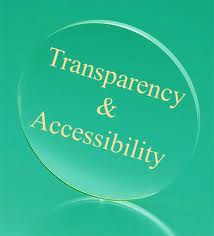 A few days ago, my friend Bob Liming who is the Director of Development at Boys & Girls Clubs of the East Valley in Mesa, Arizona sent me an email with a link to the Alliance of Arizona Nonprofits. Being the curious type of person that I am, I clicked it and was taken to a landing page that summarized the results of a December 2010 non-profit survey commissioned by the Alliance.
A few days ago, my friend Bob Liming who is the Director of Development at Boys & Girls Clubs of the East Valley in Mesa, Arizona sent me an email with a link to the Alliance of Arizona Nonprofits. Being the curious type of person that I am, I clicked it and was taken to a landing page that summarized the results of a December 2010 non-profit survey commissioned by the Alliance.
Bob asked if I knew of any national surveys that might allow him to do some comparison research or benchmarking. After a little Googling around on the internet, I’ve concluded that the closest thing to a comparison is Guidestar’s survey work. Most recently, Guidestar published “Key Findings of the Late Fall 2011 Nonprofit Fundraising Study“. However, since the Alliance’s survey went out in December 2010, a better apples-to-apples comparison might be Guidestar’s “Key Findings from the 2010 Nonprofit Fundraising Survey“.
While combing through some of this data, I just loved how Guidestar framed their data findings from their most recent Late Fall 2011 survey, when they said:
“The findings of the late fall nonprofit fundraising study, which compare fundraising results during the first nine months of 2011 to those during the same period a year ago, present a glass half empty/glass half full picture“
 Another way to look at this is in the context of a “tipping point,” which is of course the point in time when a situation can go in either direction — good or bad.
Another way to look at this is in the context of a “tipping point,” which is of course the point in time when a situation can go in either direction — good or bad.
Looking at the 2011 Guidestar report, I found the following data points interesting:
- 41- percent of survey respondents said charitable receipts increased in 2011 over 2010, compared to 36-percent in 2010.
- 8-percent of agencies responding reported they are in danger of closing their doors for financial reasons. However, when you break it down by budget size, the picture changes and 20-percent of smaller organizations find themselves in this position in 2012.
So, today the glass is half full because the unemployment rate fell to its lowest level in three years and charitable giving appears to be slowing improving. However, the glass is half empty because the demand for non-profit services seems to be tremendously increasing and a significant number of smaller non-profit agencies seem to be on the verge of going out of business as government funding dries up.
We’re at a tipping point, indeed! Stay tuned for what is sure to be a very interesting year ahead of us.
As your agency looks forward to 2012, what do you see that is positive for you? What concerns you? Please use the comment box below to share your thoughts as well as what you’re doing to position your agency for survival.
Here’s to your health!
Erik Anderson
Founder & President, The Healthy Non-Profit LLC
www.thehealthynonprofit.com
erik@thehealthynonprofit.com
http://twitter.com/#!/eanderson847
http://www.facebook.com/eanderson847
http://www.linkedin.com/in/erikanderson847










